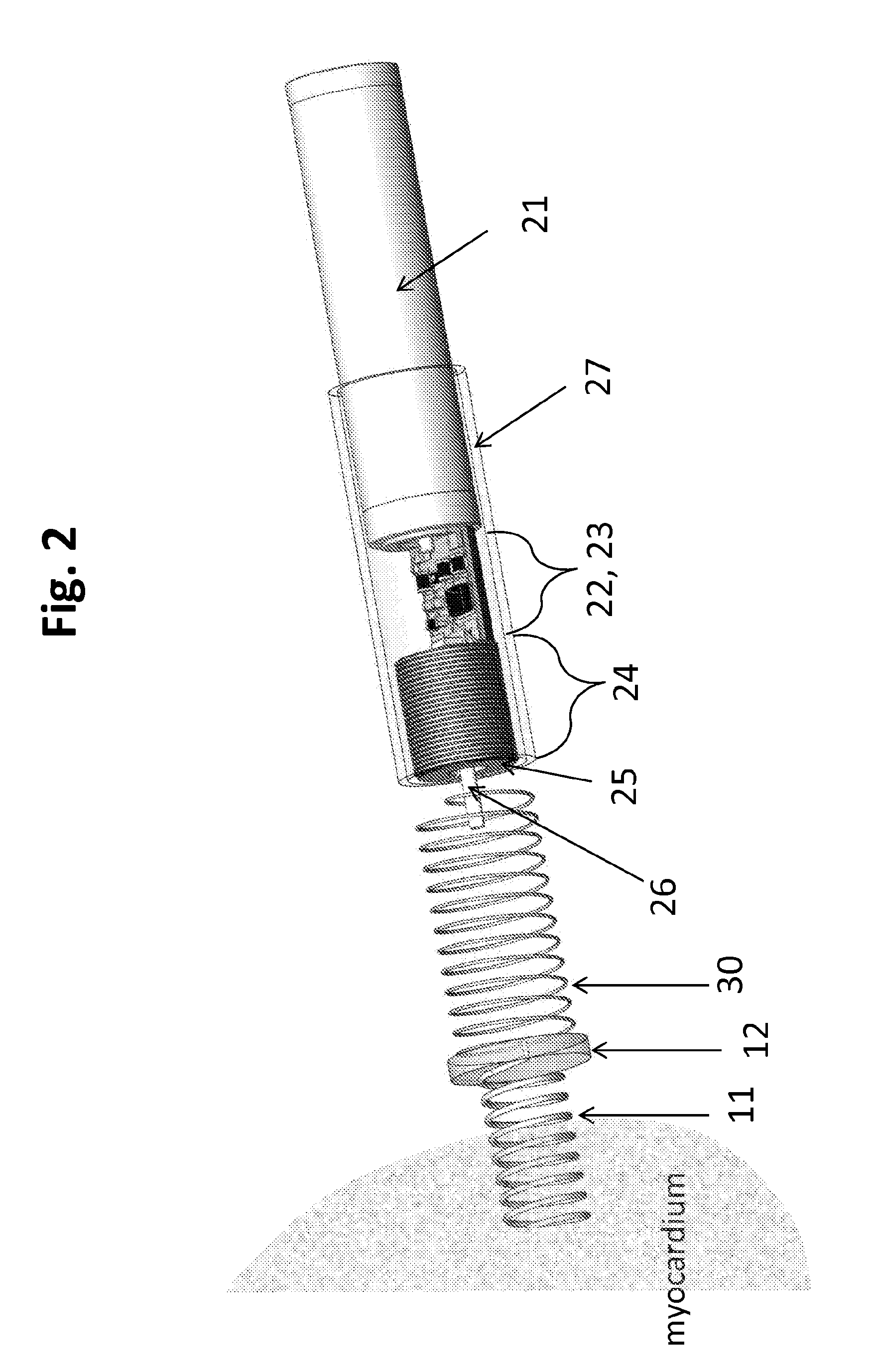Minimally invasive epicardial pacemaker
a pacemaker and minimally invasive technology, applied in the field of medical devices, can solve the problems of fetal demise almost inevitable, no effective treatment options, complete heart block in the fetus, etc., and achieve the effect of small size and no significant risk of electrode dislocation
- Summary
- Abstract
- Description
- Claims
- Application Information
AI Technical Summary
Benefits of technology
Problems solved by technology
Method used
Image
Examples
example
[0080]The invention will be further explained by the following Example, which is intended to be purely exemplary of the invention, and should not be considered as limiting the invention in any way.
[0081]A pacemaker with the mechanical features required for deployment according to the invention has been constructed and has been percutaneously implanted into an adult rabbit. The implantation was successful and showed the practicality of the device for in vivo use. The results provide compelling data regarding key aspects of the electronic and mechanical design strategies. Alteration of these aspects will be apparent to the skilled artisan as long as the effects are achieved.
[0082]Mechanical Aspects:
[0083]The main mechanical challenge in arriving at the present invention was to integrate the power source, circuitry, electrode, and flexible lead into the size and form dictated by the 3.3 mm intra-uterine cannula typically used for the percutaneous implantation for fetal applications. Wh...
PUM
| Property | Measurement | Unit |
|---|---|---|
| width | aaaaa | aaaaa |
| width | aaaaa | aaaaa |
| width | aaaaa | aaaaa |
Abstract
Description
Claims
Application Information
 Login to View More
Login to View More - R&D
- Intellectual Property
- Life Sciences
- Materials
- Tech Scout
- Unparalleled Data Quality
- Higher Quality Content
- 60% Fewer Hallucinations
Browse by: Latest US Patents, China's latest patents, Technical Efficacy Thesaurus, Application Domain, Technology Topic, Popular Technical Reports.
© 2025 PatSnap. All rights reserved.Legal|Privacy policy|Modern Slavery Act Transparency Statement|Sitemap|About US| Contact US: help@patsnap.com



